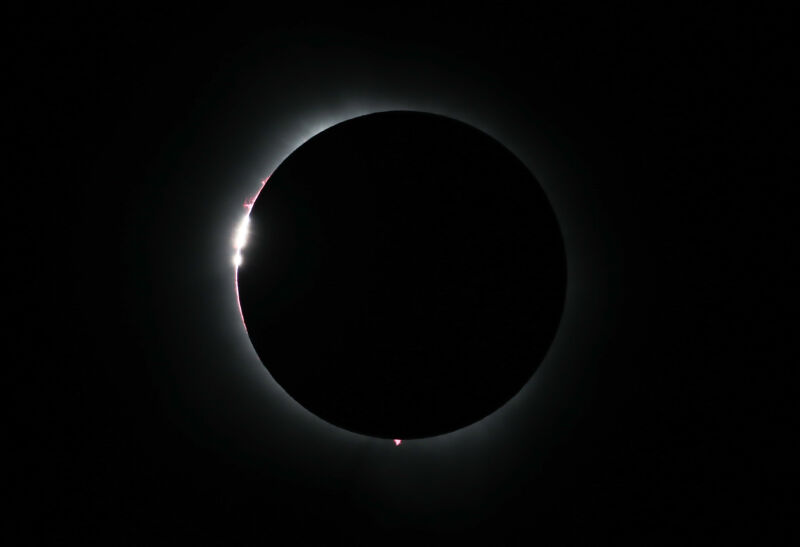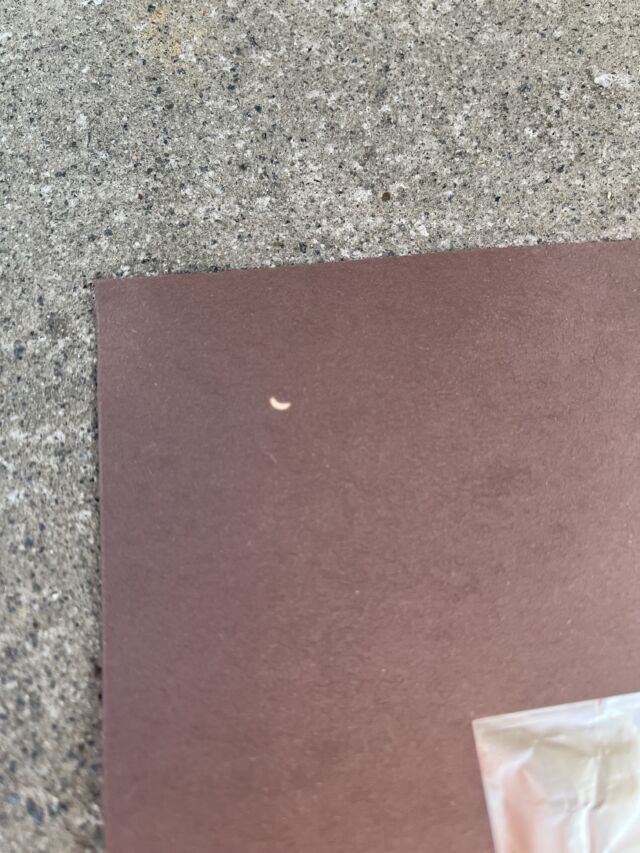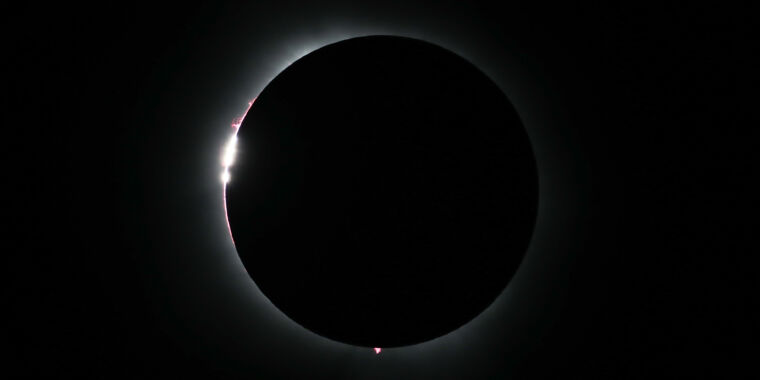Moments of totality: How Ars experienced the eclipse
Total eclipse of the Ars —
The 2024 total eclipse is in the books. Here’s how it looked across the US.

Enlarge / Baily’s Beads are visible in this shot taken by Stephen Clark in Athens, Texas.
Stephen Clark
“And God said, Let there be light: and there was light. And God saw the light, that it was good: and God divided the light from the darkness. And God called the light Day, and the darkness he called Night. And the evening and the morning were the first day.”
The steady rhythm of the night-day, dark-light progression is a phenomenon acknowledged in ancient sacred texts as a given. When it’s interrupted, people take notice. In the days leading up to the eclipse, excitement within the Ars Orbiting HQ grew, and plans to experience the last total eclipse in the continental United States until 2045 were made. Here’s what we saw across the country.
Kevin Purdy (watched from Buffalo, New York)
-
3: 19 pm on April 8 in Buffalo overlooking Richmond Ave. near Symphony Circle.
Kevin Purdy
-
A view of First Presbyterian Church from Richmond Avenue in Buffalo, NY.
Kevin Purdy
-
The cloudy, strange skies at 3: 12 pm Eastern time in Buffalo on April 8.
Kevin Purdy
-
A kind of second sunrise at 3: 21 p.m. on April 8 in Buffalo.
Kevin Purdy
-
A clearer view of the total eclipse from Colden, New York, 30 minutes south of Buffalo on April 8, 2024.
Sabrina May
Buffalo, New York, is a frequently passed-over city. Super Bowl victories, the shift away from Great Lakes shipping and American-made steel, being the second-largest city in a state that contains New York City: This city doesn’t get many breaks.
So, with Buffalo in the eclipse’s prime path, I, a former resident and booster, wanted to be there. So did maybe a million people, doubling the wider area’s population. With zero hotels, negative Airbnbs, and no flights below trust-fund prices, I arrived early, stayed late, and slept on sofas and air mattresses. I wanted to see if Buffalo’s moment of global attention would go better than last time.
The day started cloudy, as is typical in early April here. With one hour to go, I chatted with Donald Blank. He was filming an eclipse time-lapse as part of a larger documentary on Buffalo: its incredible history, dire poverty, heroes, mistakes, everything. The shot he wanted had the First Presbyterian Church, with its grand spire and Tiffany windows, in the frame. A 200-year-old stone church adds a certain context to a solar event many of us humans will never see again.
The sky darkened. Automatic porch lights flicked on at 3: 15 pm, then street lights, then car lights, for those driving to somehow more important things. People on front lawns cheered, clapped, and quietly couldn’t believe it. When it was over, I heard a neighbor say they forgot their phone inside. Blank walked over and offered to email her some shots he took. It was very normal in Buffalo, even when it was strange.
Benj Edwards (Raleigh, North Carolina)
-
Benj’s low-tech, but creative way of viewing the eclipse.
Benj Edwards
-
So many crescents.
Benj Edwards
I’m in Raleigh, North Carolina, and we were lucky to have a clear day today. We reached peak eclipse at around 3: 15 pm (but not total eclipse, sadly), and leading up to that time, the sun slowly began to dim as I looked out my home office window. Around 3 pm, I went outside on the back deck and began crafting makeshift pinhole lenses using cardboard and a steel awl, poking holes so that myself and my kids could see the crescent shape of the eclipse projected indirectly on a dark surface.
My wife had also bought some eclipse glasses from a local toy store, and I very briefly tried them while squinting. I could see the eclipse well, but my eyes were still feeling a little blurry. I didn’t trust them enough to let the kids use them. For the 2017 eclipse, I had purchased very dark welder’s lenses that I have since lost. Even then, I think I got a little bit of eye damage at that time. A floater formed in my left eye that still plagues me to this day. I have the feeling I’ll never learn this lesson, and the next time an eclipse comes around, I’ll just continue to get progressively more blind. But oh what fun to see the sun eclipsed.
Beth Mole (Raleigh, North Carolina)

Enlarge / Another view from Raleigh.
Beth Mole
It was a perfect day for eclipse watching in North Carolina—crystal clear blue sky and a high of 75. Our peak was at 3: 15 pm with 78.6 percent sun coverage. The first hints of the moon’s pass came just before 2 pm. The whole family was out in the backyard (alongside a lot of our neighbors!), ready with pin-hole viewers, a couple of the NASA-approved cereal-box viewers, and eclipse glasses. We all watched as the moon progressively slipped in and stole the spotlight. At peak coverage, it was noticeably dimmer and it got remarkably cooler and quieter. It was not nearly as dramatic as being in the path of totality, but still really neat and fun. My 5-year-old had a blast watching the sun go from circle to bitten cookie to banana and back again.
Moments of totality: How Ars experienced the eclipse Read More »
